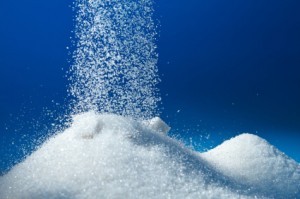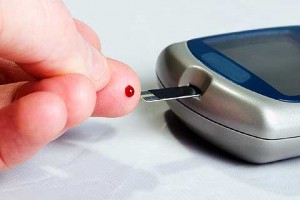AGE’s That Age Us
What are AGE’s? AGE’s are Advanced Glycation Endproducts. AGE’s can be either in the food you eat or formed within your body. AGE’s occur when sugar molecules attach to protein or fat molecules without an enzyme.
So what’s the big deal about this, you ask?
Well, AGE’s are a serious promoter of aging in the body, as well as the beginnings of many chronic diseases. In fact AGE’s are one of the biggest factors in diabetes, heart disease and others as well.
These AGE’s form a sticky plaque-like substance in the brain, nerve tissue, and the rest of the body. It is reported that when AGE’s are consumed, about 10-30% are absorbed into the body. The body’s ability to eliminate these once they are absorbed is very limited, meaning that once these gunky, gooey, nasty things get in human cells, it’s damage that cannot be undone.
While all human tissue is subject to damage by AGE’s, the lining of blood vessels is especially sensitive, as well as certain nerve cells that can quickly accumulate damage—especially in blood capillaries of the kidneys and eyes, brain and nerve cells, collagen, and your DNA. This is pretty serious and destructive stuff.
AGE’s are responsible for wrinkly, sagging skin, damage to the pancreas that causes diabetes, and damage to blood vessels, which leads to the plaque buildup that causes heart disease.
Besides the irritation and inflammation they create in blood vessels, they damage collagen in blood vessel walls, which leads to high blood pressure. Glycation also weakens the blood vessel walls, can cause aneurisms and deadly hemorrhagic strokes.
AGE’s also help form the sticky amyloid proteins and neurofibril tangles that take over the brains of those with Alzheimer’s disease, causing severe memory loss and dementia.
They can easily damage the nerves, causing peripheral neuropathy and deafness, as well as attacking the tiny blood vessels in the eyes, which in turn can lead to blindness, as well as creating dangerous by-products that can become cancer.
The wide variety of diseases is the result of glycation interfering with molecular and cellular function in the body and its release of highly oxidizing byproducts.
As you can see, AGE’s are highly destructive. Where do they come from?
Advanced Glycation End products can come from two primary sources:
- From our diet (Exogenous AGE’s)
- Internally produced in the body (Endogenous AGE’s)
Any food that is browned or roasted such as brown bread, browned or grilled meat, bacon, crispy brown cookies, chips, crackers, etc. contains AGE’s. They form whenever food browns with heat as in roasting, frying or grilling. Cooking food at high temperatures without water or liquids (as in frying) causes the sugars in the food to bind with the proteins or fats to form AGE’s.
Any food that is high in fat, protein or sugar is likely to cause AGE’s when cooked. Using water when cooking as in steaming, poaching or boiling helps to prevent the sugars from attaching to the proteins and fats and helps to prevent AGE’s. Cooking at a lower temperature also helps to minimize AGE’s.
You know that crispy skin on the roasted Thanksgiving turkey? That’s full of AGE’s. So are French fries, bacon, chips, and just about anything that is baked or fried to a golden brown. Even that juicy steak, dark roasted coffee in your espresso, and that delicious caramel on your dessert are full of AGE’s.
Processed, packaged foods often have added AGE’s to enhance their flavor and make the food look more appealing. Caramel coloring is a good example of this. The list of foods with added AGE’s also includes donuts, cakes, crackers, chips, dark colored soda, and even dark beer.
Endogenous (or internally formed) AGE’s occur in the body from the sugar and carbohydrates in the food you eat. Excessive sugar in the body (in the form of glucose) binds to proteins causes glycation. People with chronically elevated blood sugar have the most damage from AGE’s, such as those with type 2 diabetes or metabolic syndrome.
As nutrition expert Johnny Bowden says, “It’s like putting sugar in your gas tank, it totally gums up the works.”
Certain types of sugars such as fructose, are much more likely (as much as 10x more likely) to glycate. If you look at the huge amount of foods that contain high fructose corn syrup, or the large numbers of people eating sugary, processed foods and drinks, is it any wonder why there are such high rates of cancer, diabetes, heart disease, and other inflammatory diseases?
AGE’s can be measured by the same test given to diabetics to monitor long-term blood sugar control. This relatively new blood test is known as the Hemoglobin A1c test.
For optimal aging, your A1C levels (whether diabetic or not) should be less than 5%, which would mean keeping an average blood sugar level of about 90 mg/dl. While that seems fairly low by some conventional medical standards, this percentage is easily attainable if you eat to keep blood sugar stable.
Minimize the effects of AGE’s
- Keep blood sugar low with a low carb/low sugar diet. Especially avoid the sugar that comes from fructose, as in high fructose corn syrup and fruit juices.
- Avoid grains—especially wheat and corn, they tend to raise blood sugar. And grains are often baked or fried to become crispy and brown which makes them even higher in AGE’s. Yes, that includes that wood fire roasted pizza, too.
- Cook meats at lower temperatures – Higher temperatures produce far more AGE’s than slower cooking over low heat. Cook meat in broth if possible. For example, rare and medium-rare meats will have fewer AGE’s than fully cooked meats, like barbeque, bacon, or well-done steak.
- Eat vegetables and fruits raw, boiled, stewed, slow-cooked, or steamed – boiling and steaming introduce water to the cooking process, which stops glycation.
- Avoid processed foods. Not only are they higher in sugar content, they often have caramel coloring and other additives high in AGE’s to improve color and appearance.
- Avoid browned, roasted, grilled, carmelized, or fried foods. If it’s golden brown or brown, it most likely contains AGE’s.
- Avoid dark colored sodas, dark beer, and anything with caramel coloring in it.
Combat AGE’s With These Foods
All low-glycemic foods
Kale, collard greens, or spinach
Tomatoes
Carrots
Sweet potatoes
Red, yellow or green peppers
Broccoli, cauliflower, Brussels sprouts
Artichokes
Berries
Cherries
Kiwi
Plums
Red or black grapes
Beans
Green tea, black tea, and rooibos tea
Cinnamon, Cloves and Turmeric
Supplements that Battle AGE’s
- L-carnosine – An amino acid found in protein. L-carnosine helps prevent glycation by generating an enzyme that is able to counterattack AGE’s that have already been formed. This supplement is said to decrease the risk of attracting neurodegenerative disorder and inflammatory diseases by removing the unsaturated aldehydes (sugars). Since meat contains this amino acid, eating meat is less likely to produce as many dangerous AGE’s in the body.
- Benfotiamine – A fat-soluble synthetic form of vitamin B-1. This substance has been studied to stop AGE’s from being formed. It blocks the biochemical processes that can cause vascular, nerve, kidney and retinal damage that are connected AGE’s and high blood sugar levels. Benfotiamine is a supplement and not naturally found in foods.
- Pyridoxamine – A unique form of vitamin B6, called Vitamin B6 is involved in hundreds of beneficial enzymatic reactions in the body. While the benefits of conventional vitamin B6 (pyridoxine) are well documented, this unique form of vitamin B6 called pyridoxamine is thought to interfere specifically with the toxic glycation reactions in the body.
- Antioxidants – Foods and supplements high in antioxidants will help to combat the damage that AGE’s do in the body. Supplements include alpha lipoic acid, astaxanthin, vitamin C and vitamin E, beta-carotene, zinc, selenium, quercetin, and flavonoids.
While it may be virtually impossible to avoid the glycated end products, you can minimize them and the damage they do with your diet. And that, in itself will go a long way towards keeping you young.
Till next time,
Stay healthy, lean and young!
Get the latest Gluten Free, Superfoods Recipe book HERE–The Fat Burning Kitchen Superfoods Recipes.
 Catherine (Cat) Ebeling RN BSN, is a back to basics diet and nutrition specialist. In addition to her advanced degree in nursing from a major medical school, she has spent the last 30 years intensely studying diet, health and nutrition. Cat also has a book titled “The Fat Burning Kitchen, Your 24 Hour Diet Transformation” that has sold over 60,000 copies worldwide, and has helped thousands of people transform their lives, lose weight and improve their health.
Catherine (Cat) Ebeling RN BSN, is a back to basics diet and nutrition specialist. In addition to her advanced degree in nursing from a major medical school, she has spent the last 30 years intensely studying diet, health and nutrition. Cat also has a book titled “The Fat Burning Kitchen, Your 24 Hour Diet Transformation” that has sold over 60,000 copies worldwide, and has helped thousands of people transform their lives, lose weight and improve their health.
Her mission is to help others prevent disease and live their best life ever.
Nutrition made Easy. Simple.Smart.Nutrition.











